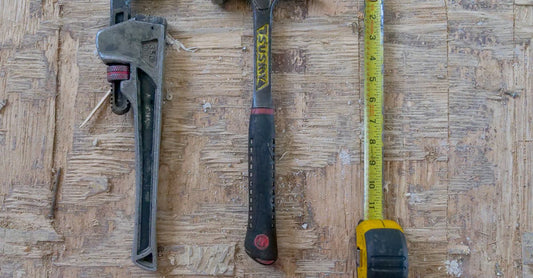voh-lahj drohp
Noun
The decrease in electrical potential along a circuit
Example usage: We need to check for voltage drops in the wiring.
Most used in: Electrical and construction projects in the United States.
Most used by: Electricians, contractors, and other trades people.
Popularity: 8/10
Comedy Value: 2/10
Also see: Voltage Loss, Voltage Drop-Off, Voltage Reduction, Voltage Sag,
Understanding Voltage Drop: An Electrician's Definition
Voltage drop is a term used in electrical construction to describe the difference in voltage between two points of a circuit. It is the amount of energy lost as electricity passes through a circuit, and is caused by resistance in the circuit's components. Voltage drop can be a problem for an electrician, as it can cause the circuit to not work properly or even cause a fire.
Voltage drop is calculated using Ohm's law, which states that voltage (V) is equal to current (I) multiplied by resistance (R). The formula for voltage drop is V = I x R. The voltage drop is the difference in voltage between the two points of the circuit, and is usually expressed in volts (V).
The amount of voltage drop that is acceptable depends on the type of circuit. Generally, for residential circuits, a voltage drop of less than 5% is considered acceptable. For commercial and industrial circuits, a voltage drop of less than 3% is considered acceptable. If the voltage drop is greater than these percentages, then the circuit should be redesigned to reduce the voltage drop.
Voltage drop can be reduced by increasing the size of the wires used in the circuit. Increasing the wire size will reduce the resistance, and thus reduce the voltage drop. The size of the wires should be chosen based on the current that will be flowing through the circuit.
Voltage drop is an important concept for electricians to understand, as it can cause problems with circuits and even be dangerous. By understanding Ohm's law and the acceptable voltage drop percentages, electricians can design and install circuits that will be safe and efficient.
Etymology of Voltage Drop: From Faraday to the Modern Electrician
The term 'Voltage Drop' was first used in the early 1800s by Michael Faraday, a British scientist and inventor. Faraday was the first to discover the phenomenon of Voltage Drop and named it 'electromotive force' (EMF). He used this term to describe the difference in potential between two points in an electrical circuit.
The term Voltage Drop was first used in the mid-1800s by William Thomson, an Irish physicist and mathematician. He used the term to describe the decrease in voltage or electromotive force when current flows through a circuit. This concept was later studied and developed by James Clerk Maxwell, a Scottish physicist and mathematician.
In the early 20th century, the term Voltage Drop was adopted by electricians and engineers, who used it to describe the decrease in voltage that occurs when current flows through a circuit. Today, Voltage Drop is a widely used term in the field of electrical engineering and construction.
Voltage Drop is an important concept for electricians, as it can be used to calculate the amount of power lost in a circuit. It is also used to determine the size of a conductor, to ensure that the circuit is operating safely and efficiently.




